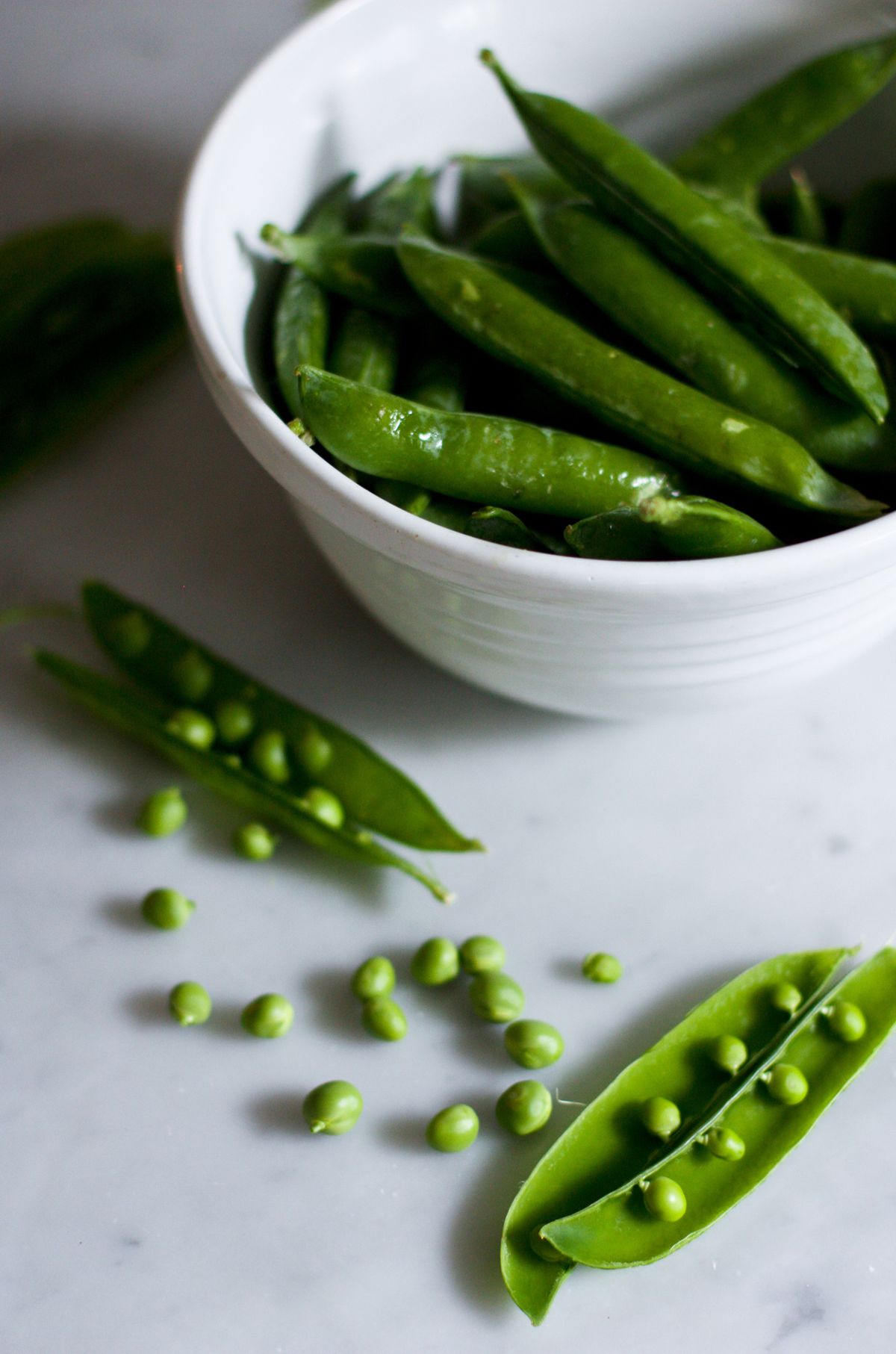Ahh shucks – it’s all good
Fresh English peas are definitely worth the time, effort

It’s the beginning of farmers market season in the Inland Northwest.
One thing I look forward to each year is the early season fresh English peas. Not to be confused with snow peas, with very thin edible pods and tiny undeveloped seeds, or crisp crunchy snap peas, English peas must be shucked. Their sweet, plump seeds are encased in large, tough pods that must be removed before eating. Typically available here the end of May, English peas prefer the cooler growing temperatures of late spring and early summer. They’re here for only a few short weeks before the heat of summer arrives, so be on the lookout for them.
Did you know that one serving of spring peas contains more protein than an egg? They are extremely high in fiber with less than a gram of fat and no cholesterol. They contain phytonutrients, which new findings suggest may lower the risk of stomach cancers. They also are rich in antioxidants and have anti-inflammatory properties. Remember when your mom told you to eat your peas? Well, apparently she was right about that, too.
Shucking peas can be a very gratifying and relaxing activity. It requires no skill other than the ability to create a luxurious amount of time for oneself. To fully experience the benefits of pea shucking, find some ample time to sit down. Feel the sturdy pods in your hand. Pinch off one end and pull down the tiny string along its back. Glide your thumb inside the opening along the inner spine and release the sprightly peas from their pod. Listen to the tiny plunk they make as they drop down into the bowl. Go slowly. Take your time. A strange thing will happen. You will begin to feel very relaxed. The more time I spend in the kitchen, I find this true with even the most mundane of tasks. It’s almost as if, no matter what the chore – chopping onions, peeling garlic, washing a mountain of dishes, sweeping the floor – the more present I am, the more soulful and gratifying the act becomes.
A warning: If you are in a hurry, please don’t attempt to shuck peas. It will end badly, and you will never, ever want to have anything do with them again. Occasionally local grocery stores will carry shucked English peas in their refrigerated section. When pinched for time, purchasing shucked peas is perfectly reasonable.
This recipe can be made in less than 30 minutes (not including the time for shucking peas). It can be served as a light dinner with a fresh arugula salad or as an appetizer course with each scallop being an individual portion. If scallops are not your favorite, a white fish such as halibut or sable fish (black cod) would make an excellent alternative. This recipe calls for truffle oil and I realize this may seem a little highbrow, but the combination of fresh peas, truffle and lemon is heavenly and a good excuse to try truffle oil, if new to you.
Seared Sea Scallops with English Pea Puree
4 cups water
1 tablespoon salt
2 cups shucked English peas
1 lemon, juiced and zest reserved for garnish
2 tablespoons olive oil
1/4- 1/3 cup chicken stock
1 small garlic clove
1/4 cup fresh mint leaves (packed)
1/4 cup fresh Italian parsley (packed)
3/4 teaspoon kosher salt (less if using regular salt)
1/4 teaspoon white pepper
2 tablespoons canola oil
12-16 large sea scallops (depending on size)
salt and pepper for seasoning
1 teaspoon white truffle oil
In a medium pot, bring 4 cups of water and a tablespoon of salt to a boil. While waiting for the water to boil, pat scallops with paper towels and set aside. Once water is at a full boil, add peas. Blanch for no more than 2 minutes. Peas will float when ready. Strain and place the peas back in the pot, under running cold water, straining again, and refilling again until the water feels cold. Let peas sit for a few minutes in the cold water to stop cooking. Drain again and set aside.
Zest and juice one lemon and set zest aside for garnish. In a blender or food processor, (the blender will make this smoother) place the peas, olive oil, 1/4 cup chicken stock, 2 tablespoons fresh lemon juice and small garlic clove. Blend, scraping down sides. Add the herbs, salt, pepper and truffle oil. If you need to add additional stock to get the motor going, do so a little at a time. Blend until smooth. Place back in pot and set on low heat, stirring occasionally.
Heat 2 tablespoons canola oil in a heavy-bottomed skillet on high heat until you begin to see smoke. Turn to medium high. You want the oil to be hot in order to create a good sear. Sprinkle scallops with salt and pepper and carefully place in the hot skillet. Turn over when seared side is golden, about 2 minutes. Sear another 1 1/2 to 2 minutes or to desired doneness. Set on paper towel. Divide warm pea puree between 4 plates, then place seared scallops over top and garnish with lemon zest and a few sprigs of parsley or mint and, if you want, a small drizzle of truffle oil. Serve immediately.
Yield: 4 servings